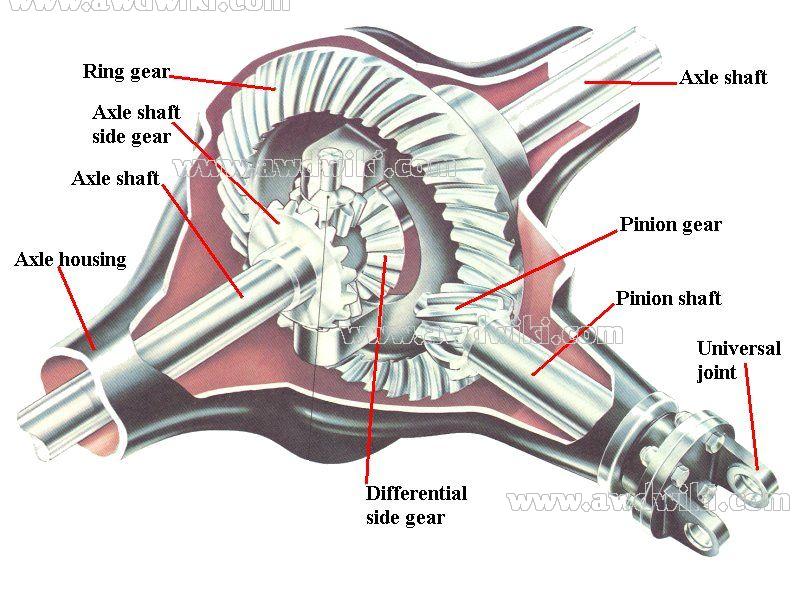When it comes to automotive performance and driving dynamics, one component often stirs up spirited debate: the differential. Does the choice between an open differential and a limited-slip differential spell the difference between mediocrity and magnificence on the road? Let’s dive into the intricacies of this discussion and see where the lines blur between these two contenders.
In the realm of vehicle dynamics, the differential serves as a crucial element that allows for the wheels to rotate at different speeds, particularly important during turns. Imagine taking a winding mountain road; the outside wheel travels a longer distance than the inner wheel. Here, the differential plays a pivotal role. However, the type of differential you have can profoundly alter your driving experience. So, which is superior: the open differential or the limited-slip differential?
First, let’s explore the open differential. This is the most conventional type of differential found in many vehicles, especially in everyday sedans and economy cars. It operates on a straightforward principle. Power is distributed evenly to both wheels, which allows them to rotate at different speeds. While this simplicity is an advantage, it also comes with significant drawbacks. Imagine being stuck on a slippery surface; if one wheel starts to spin, the open differential sends power to that wheel, leaving the other wheel stationary. It’s akin to playing tug-of-war with one of your teammates tied to a chair—a frustrating experience often leading to getting stuck.
On the contrary, the limited-slip differential (LSD) emerges as a knight in shining armor, addressing some of the open differential’s shortcomings. The LSD employs a system that limits the amount of slip that can occur between the wheels. When a wheel begins to spin more quickly than the other, the LSD redistributes torque between both wheels, allowing power to reach the wheel with more traction. For a driver facing adverse road conditions, this differential type transforms the vehicle into a reliable ally. The enhanced grip can make the difference between navigating through a challenging situation or being immobilized.
Now that we’ve laid out the foundational characteristics of both systems, let’s delve into performance. Drivers who relish spirited driving on twisty roads or tracks often gravitate towards limited-slip differentials. The LSD not only contributes to better grip but also enhances cornering stability. Picture yourself rounding a corner: with an LSD, your car can maintain traction, enabling you to accelerate smoothly without the dreaded understeer or oversteer. In contrast, the open differential can lead to one wheel spinning wildly, sacrificing your control and cornering prowess.
But is the LSD flawless? Not quite. The limited-slip differential can sometimes introduce complexities in handling. The increased friction characteristics can lead to a stiffer ride, particularly in high-performance applications. Drivers who prioritize comfort might find the smooth operation of an open differential more appealing. There’s a certain predictable charm to the simplicity of an open differential, which allows for a gentler driving experience. So, does your heart lean more towards comfort or performance?
Let’s not ignore the various contexts in which these differentials shine. For casual drivers or those primarily using their cars for commuting, the open differential may suffice, delivering a balanced and straightforward driving experience. On the other hand, hardcore enthusiasts or anyone venturing into off-road territory might be inclined to opt for the limited-slip differential’s performance benefits. In harsh conditions, like mud or snow, the LSD can significantly improve traction, transforming a potentially harrowing experience into one of triumph.
Moreover, let’s discuss the longevity and maintenance aspects of each type. Open differentials tend to be simpler and may require less maintenance; however, they may not perform well over time, especially if driven in conditions that require substantial grip. In contrast, while LSDs can be more robust, they may necessitate more regular maintenance and fluid changes to ensure optimal performance. The question arises: how much maintenance are you willing to invest for the sake of superior handling?
Another dimension to consider is the impact on driving style. Owners who relish a spirited driving experience will find the LSD intoxicating, as it often facilitates a more engaging connection between the car and driver. Yet, for those who prefer a more laid-back approach, the open differential provides a more relaxed interaction. It’s a classic case of “to each their own,” dependent on individual driving philosophies.
Ultimately, the decision between an open differential and a limited-slip differential boils down to your unique needs and preferences. The open differential might suit the casual driver looking for reliability and comfort. In contrast, the limited-slip differential is essential for those who demand performance and enjoy pushing the limits. The debate will likely continue, with passionate advocates on either side. So, which camp do you belong to? Will you embrace the open differential’s simplicity, or will you wrestle with the complexities of limited-slip for a performance edge? The choice is a reflection of your driving character; embrace it!
